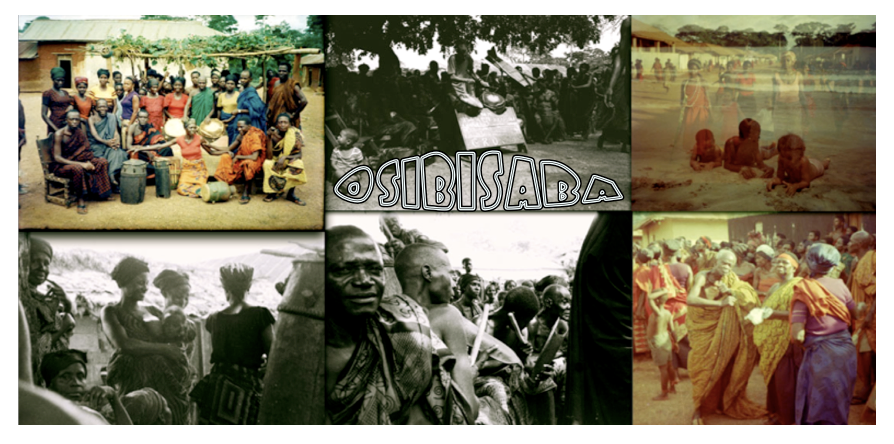Here we have an album of four sweet, upbeat tunes from K.K.'s no. 2 Band, with a soukous-style track at the end. The title track "Heavy Mama" is one of my all time favorites. This humorous, feel-good pidgen song has a soukous/highlife flavor to it and will definitely get stuck in your head in no time ("Heavy mama, heavy mama, ohhhh heavy mama!"). Here, the singer laments the sad position in which his lady (his "heavy mama") has left him. He buys her everything she desires, gives her money to send back to her papa in the village, yet she only comes to visit him when it's payday! As in many other highlife songs, conflict between the sexes (especially relating to money and women) is highlighted as a major theme.
Also, I would like to note this album's interesting cover artwork which I find appealing and idiosyncratic. I would be curious to hear other folks' interpretation of this album cover. What do you think?

Every album by K.K.'s No. 2 Band is a treat to hear, but it's a shame that there isn't much information available about this group and its leader/singer A.K. Yeboah (Anthony King Yeboah, or sometimes "King" Yeboah). We know that Yeboah received his musical training under the legendary highlife musician and concert party performer Kakaiku (Moses Oppong). Yeboah went on to perform with Kakaiku's no. 2 band, which I would guess was the group out of which K.K.'s no. 2 Band evolved. According to John Collins, Yeboah and his K.K.'s no. 2 went on to perform as a concert party troupe, surely a successful one considering Yeboah's early training in Kakaiku's band. In case you're unfamiliar with the "concert party," here's a brief description from Collins:
 |
| E.K. Nyame's Akan Trio |
"Ghanaian concert parties are professional groups of itinerant artists who stage vernacular shows for the rural and urban audiences that combine slapstick musical comedies, folk stories, acrobatics, moral sermons, magical displays and dance-music sessions. The appeared just after the First World War and since then have acted as a cultural vortex in Ghana, for besides drawing on the indigenous and imported, old and new, they have accreted to themselves local highlife music and dance, sign painting [large adverts called concert 'cartoons'], comic literature and the film/video format. Furthermore, since the 1960's the concert party and its associated guitar band has been one of Ghana's most important influences on and avenues for contemporary popular performers."
The influence of the concert party is present in A.K. Yeboah's music itself. Like the guitar band highlife of other Akan concert party performers (E.K. Nyame's Akan Trio, for instance), group singing is structured in the format of a trio. Middle-range and bass singers are present, and the "treble singer" stands out above the others with his high falsetto and "warbly" vibrato (these "treble singers" play female roles in concert parties, typically all male performances!). This phenomenon of female impersonation and treble singers is an interesting one (Yeboah serves as K.K.'s treble singer), as female highlife singers were a small minority during this time period and met some considerable difficulties. The few female singers who did perform, like Charlotte Dada and Vida Rose, were often considered loose and immoral (as a child, a Ghanaian friend of mine recalls his parents speaking about Charlotte Dada as if she were a prostitute!).
In terms of the structure of these songs, singers may alternate between long, declamatory solo sections, returning to group refrains sung in harmony. These refrains have a unique musical texture, as each singer adds his own variations and improvisations to the basic melody. The resultant texture is one of offset rhythms, musical interjections, and embellishments, the things that make the music sweet. Enjoy!
Note: If you're not already aware, two other albums by K.K.'s no. 2 are available over at Global Groove.












